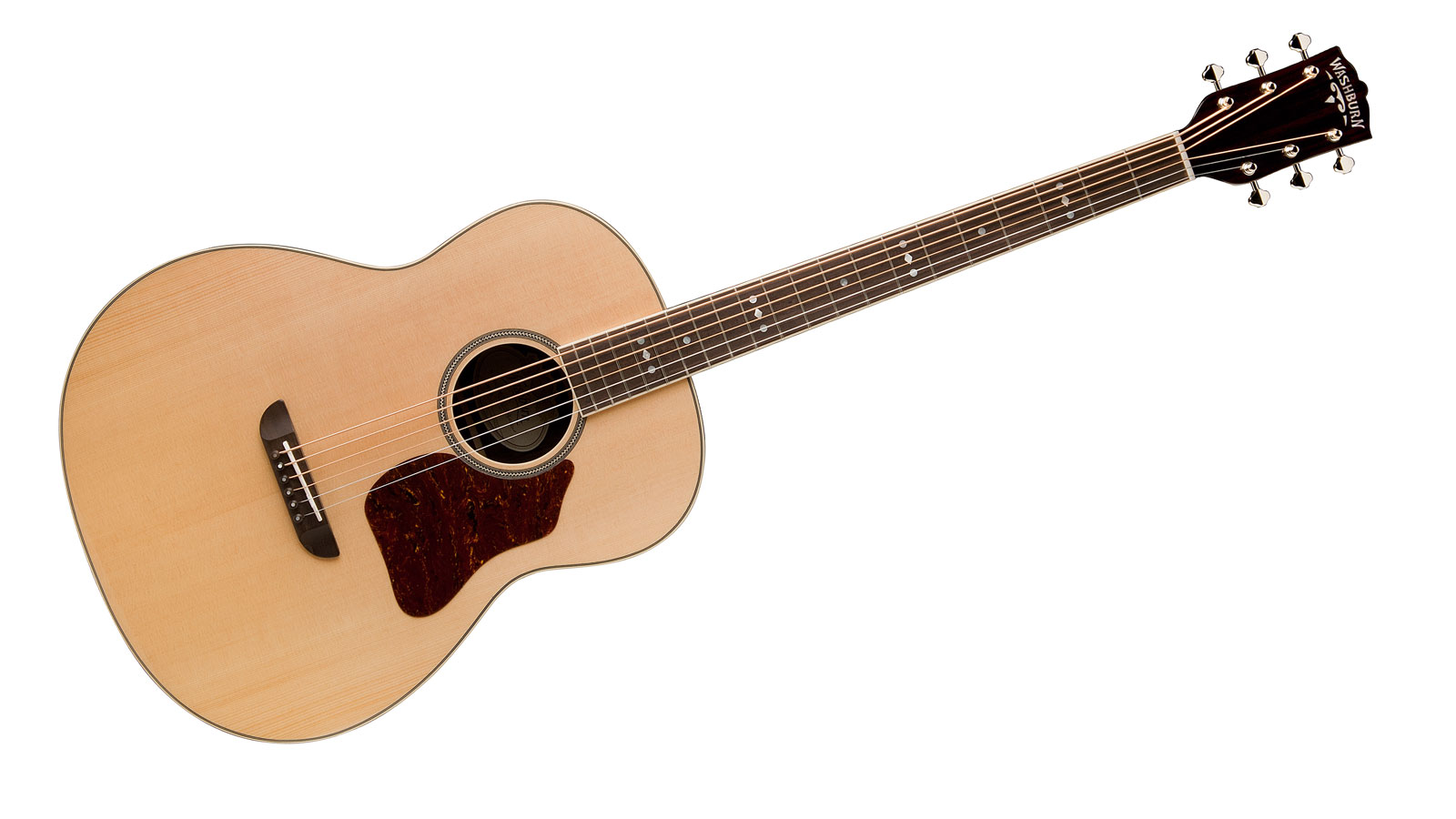MusicRadar Verdict
For any creative musician looking to expand their pitch, this is a great place to start. It won't overly hurt the wallet, either... just your fingers!
Pros
- +
Tidy construction. Offers something genuinely different. Exciting applications for looping types.
Cons
- -
Plugged-in tones require some treatment. Takes some getting used to!
MusicRadar's got your back
The acoustic baritone guitar took a big leap when Taylor added a six- and eight-string to its line-up in 2011. Tuned down, typically, B to B, it means you can play the same fingering but the pitch is lower - the reverse, if you like, of a pitch-raising capo. You can tune how you like, so long as you respect string gauge and tension.
This Washburn baritone - we'll shorten it's name to LSB, aka Lakeside Baritone - is a large and deep, round-shouldered pre- dreadnought design that debuted in 1912. But the baritone scale length is more contemporary and, if our research is correct, unique.
"While the aforementioned baritones aim for a 686mm (27-inch) scale, Washburn has gone for 737mm (29 inches)"
Acoustic baritones are rare; aside from Taylor, Walden has the futuristic B-1E, and Alvarez's ABT60E is highly affordable. In addition to the bulk of the body, the scale here is the longest we've encountered.
While the aforementioned baritones aim for a 686mm (27-inch) scale, Washburn has gone for 737mm (29 inches), just 25.4mm short of the standard 'short' bass scale of 762mm (30 inches). Irrelevant of the maths, it's huge!
Overall construction is very tidy, though: from the bound rosewood 'board with diamond and dot inlays through to the not overly thick-looking gloss natural finish that covers the solid Sitka spruce top and laminate rosewood back and sides.
The 15-fret neck join is usual and it means the neck feels even longer: played seated, it's really quite a stretch to play a root position E major chord. The neck width and depth isn't excessive - 43mm (1.69-inch) wide at the nut with a 56mm (2.2-inch) string spread at the bridge, which features a compensated saddle.
The electrics are from Fishman: a Sonitone active preamp system with Sonicore under-saddle pickup, soundhole-placed volume and tone wheel controls, and base output jack/strap button.
Want all the hottest music and gear news, reviews, deals, features and more, direct to your inbox? Sign up here.
"It's a huge sound, and acoustically well-balanced and projecting"
So, big body, ultra-long scale... well, check the string gauges of D'Addario's EXP-23 phosphor bronze bari ropes: 0.016, 0.022, 0.029, 0.048, 0.060 and 0.070- inch - the top two are plain, the others wound.
Our first hours with the LSB were a little unmusical and quite painful on the left hand. The depth of the tone makes everything you play sound slowed down, but slowly, we got our hands around it. It's a huge sound, and acoustically well-balanced and projecting.
Plugged in, it's not the hottest output we've encountered, and the low B is a little quiet. But plugging into an acoustic pedalboard with compression, EQ, reverb and delay/looper, we really begin to hear the potential.
A simple low bassline/percussion slap loop becomes a solid foundation for upper-fret parts, which after recording and adding overdubs, becomes an almost orchestral, piano-like soundscape: tremendous.
Dave Burrluck is one of the world’s most experienced guitar journalists, who started writing back in the '80s for International Musician and Recording World, co-founded The Guitar Magazine and has been the Gear Reviews Editor of Guitarist magazine for the past two decades. Along the way, Dave has been the sole author of The PRS Guitar Book and The Player's Guide to Guitar Maintenance as well as contributing to numerous other books on the electric guitar. Dave is an active gigging and recording musician and still finds time to make, repair and mod guitars, not least for Guitarist’s The Mod Squad.

